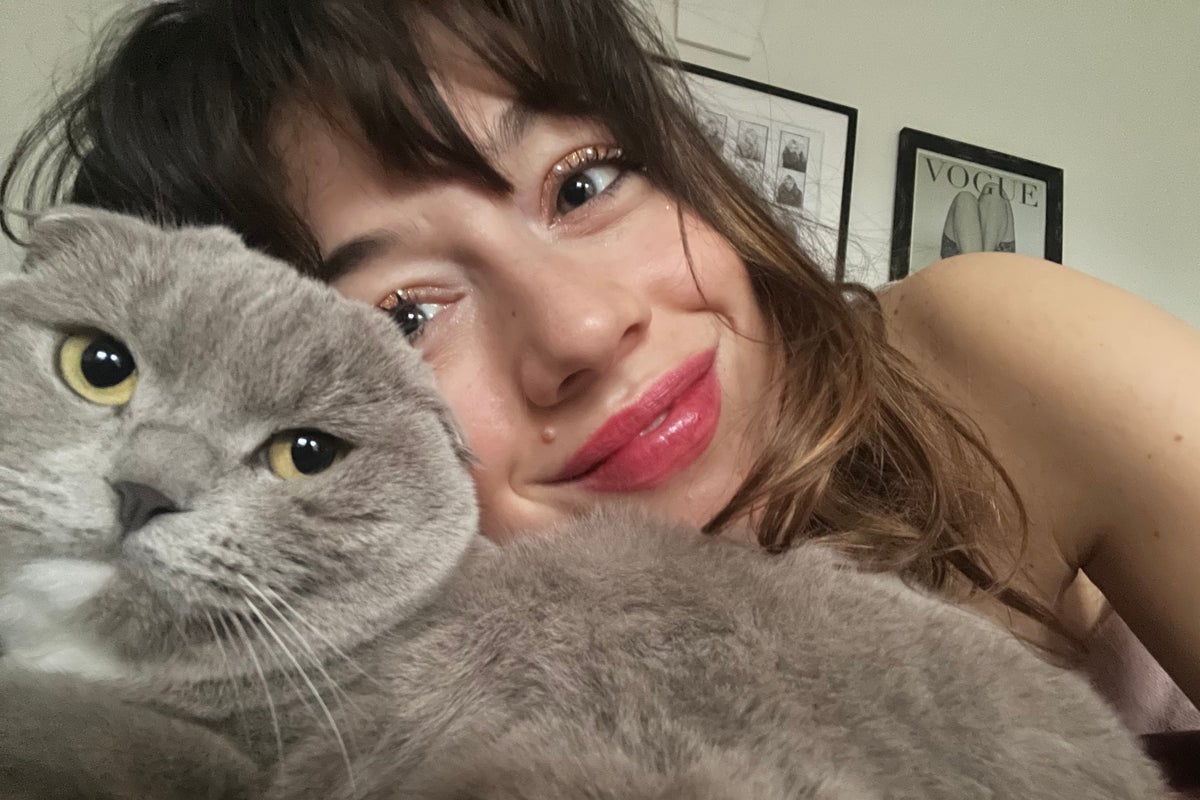
If there’s any domestic animal in need of some good PR, it’s the cat. In the pet world, they are a much-maligned anomaly. While other animals are permitted depth of character, cats are often reduced to stereotypes. They’re aloof. They’re demanding. They think they’re better than you. Some of that might be true. But internationally renowned cat expert Dr Sarah Brown has made a career out of proving why it isn’t always the case.
Dr Brown began her studies more than 30 years ago, and has spent years analysing the minutiae of feline behaviour, highlighting all the quirks and complexities that motivate cats. Having done her PhD on feral cats, she also works as a cat behaviour counsellor, visiting owners in their homes to try and help solve their pets’ problems. Typical issues range from spraying around the house to attacking owners’ ankles. On one occasion, Dr Brown dealt with a cat who’d been chewing the television cables. “That was a pretty dangerous one,” she recalls.
I’ve invited her to my house to meet my own cat, Blanche DuBois, and it only takes a few minutes for her to decipher our entire dynamic. “I imagine you don’t leave her alone much,” she says. “I can tell you’re very bonded with her.” She’s right: I am completely obsessed with Blanche. Although I’m not sure it takes a cat expert to work that one out.
Much of Dr Brown’s new book, The Hidden Language of Cats, revolves around debunking some of the common misconceptions surrounding the animals. In it, she traces cats back to their ancestral roots and examines historical records and scientific studies to illustrate some of the previously unexamined magic behind these furry creatures. “A lot of people misunderstand cats,” she says, putting this down to the fact that they descend from North African wildcats, which is an entirely solitary species.
“They didn’t come across each other very much and would communicate via scent,” Dr Brown explains. “Face-to-face contact wasn’t really a thing for these animals; unlike dogs, which descend from social wolves, cats had to develop their language from scratch, so to speak.” In short, they had a lot more work to do, and some have clearly worked harder than others.
Cats also haven’t been domesticated for as long as dogs, which, in part, is why their signals for communication are often more subtle. “It’s things like whether their tail is up or down, and which way their whiskers are pointing,” says Dr Brown. “Their ears alone have seven different ways of moving. It’s not that they’re aloof; it’s that most of what they’re doing we’re not noticing. You just need to look harder.”
New research is coming out all the time to prove this. In fact, just this week a new study published in the Behavioural Processes journal revealed that cats have 276 facial expressions, a range that is thought to have evolved as a result of living with humans. The researchers found that through a variety of facial muscle movements, including nose licks, nose wrinkles, and blinks, cats were able to express themselves in far more ways than experts have previously thought.
Am I a crazy cat lady? I probably am. It’s interesting because cats have a long history of being associated with goddesses and worship. Then witches happened...— Dr Sarah Brown
It’s a number that isn’t far off from the 357 expressions that have been spotted in chimpanzees; but it’s a far cry from the 27 facial movements observed in dogs, though no one has studied the number of expressions that can be derived from a combination of these movements. Still: take that, dog lovers.
In terms of the things cats are trying to communicate, Dr Brown explains it’s mostly along the lines of, “feed me, let me out, let me in, pet me, play with me, leave me alone!”. “The thing with cats is that they like to lead interactions, to have them on their own terms,” she says.
This is something I know all too well. You see, Blanche does not like to be told what to do. Whenever I have to shut her in a room, for example, she scratches furiously on the door, meowing until I open it. That said, she is hardly a problem cat. If anything, her only issue is that she does not have enough issues. An indoor high priestess who spends her days perusing her kingdom (my flat) from either her palace (cat tree) or her conservatory (chest of draws that overlooks a shared garden), Blanche is nothing if not overindulged. Occasionally, I worry this affects her behaviour. Dr Brown, who has spent the last 30 minutes assessing her, assures me this is not the case.
“She seems like a pretty standard, marvellously rewarding cat,” she says, holding up a piece of string that Blanche is happily pawing at. “For an indoor cat like her, enrichment is really important. So it’s great you have things like the scratching post and plenty of toys. It’s key to make her life as interesting as possible.” Throughout our chat, Blanche pads around the flat, climbing her cat tree, hiding under a chest of drawers, and meowing into the room. “She’s very busy, isn’t she?” Dr Brown remarks, noting how her tail flicks up when she comes towards her, which, apparently, is a sign she’s greeting her and being friendly. Phew.
We have a very close relationship, Blanche and I. And I explain as much to Dr Brown. Again, though, I think this requires no explanation. Given that I work from home, we spend a lot of time together. She sleeps on the pillow next to me most nights, sometimes placing her paw over my hand, and enjoys being near me wherever I am in the flat. “Clearly, she feels very safe with you,” says Dr Brown. “She doesn’t really seem that interested in wanting her own space and actually just wants to be in your space and be a part of your social group.”
Much of Dr Brown’s book is about how cats communicate with us. There are many types of meows, for example, and they differ between cats. “People who live closely with their cats may develop a repertoire where you start to understand some of their meows,” she says. “They use it as a prompt to tell you what they want or need.”
That’s all very well and good. But what about when it comes to us communicating with our cats? There are endless memes on the internet, for example, about how cats don’t even know their own names. This, Dr Brown points out, is not strictly true. “Studies have shown that cats can recognise their own name among other words that sound similar to it,” she says. “They won’t come running down the stairs when they hear it like dogs, but they might stop what they’re doing and suddenly pay more attention to you.”
'As much as cats themselves might be misunderstood, that stigma is nothing compared to that which we attach to cat owners, particularly if, like me, they’re women’— (Olivia Petter)
We can also tell them that we love them, although perhaps not in those exact terms. “The best way of showing cats love is to notice what they’re doing and try to read their signals and respond,” says Dr Brown. “That might be giving them space when they need it or affection when they ask for it.”
There are a few specific things Blanche does that I want to ask Dr Brown about. Why, for example, does she always roll on her back with her little feet in the air when I come home? “That’s a really big compliment and means she’s really relaxed and comfortable,” she says. “But people think that means ‘come and rub my tummy’ and most cats hate that.” Indeed, Blanche is not always a fan.
Another thing she hates? Children. She has hissed at three toddlers in the past year alone. “That’s quite common,” says Dr Brown. “Children can be quite forthcoming with their movements and cats don’t like it when people go straight in to handle them. They like any form of contact to be on their terms.” So far, so straightforward. A slightly more niche query I have: why, whenever I roll out my yoga mat at home, does Blanche rush to lie on it with me, often stretching herself. Does she want to do yoga too? “Cats really like it when you get down on the floor because then you are on their level,” says Dr Brown. “I think it’s a case of you’re doing something interesting that you don’t normally do and she thinks that’s fun and wants to get involved.”
I also want to address one key concern. Aside from me, Blanche doesn’t tend to like women, at least not for a while – she meows and wriggles away whenever they try to pick her up or interact with her. However, she has always warmed very quickly to men, flopping into their arms to let them cuddle her, posing in her prettiest positions whenever one comes round. Is my cat a misogynist? Or perhaps just a bit slutty?
“This is possibly down to her early upbringing,” suggests Dr Brown. “It might be that she was around more men than women when she was between two and seven weeks old, which is where all the socialisation happens for cats. Maybe they had an interaction style with her that she particularly liked, or she enjoys the way men handle her. It’s interesting because generally cats prefer the way in which women interact with them.”
This brings me to my last question for Dr Brown. I want to ask her about the people who own cats. Because as much as cats themselves might be misunderstood, that stigma is nothing compared to that which we attach to cat owners, particularly if, like me, they’re women. As any female cat owner will know, the “crazy cat lady” trope is a pervasive one both socially and culturally, making appearances everywhere from Friends to The Simpsons. It’s also something I’ve been called many times.
The ‘crazy cat lady’ trope, as seen here in ‘The Simpsons’, is a pervasive one both socially and culturally— (20th Television)
“Am I one? I probably am,” says Dr Brown, who herself has one cat named Smudge. I assure her that if she is, then I am too. “It’s interesting because cats have a long history of being associated with women, beginning with Egyptian goddesses, and then witches.” It’s not clear exactly when women started being accused of witchcraft, or when cats started being perceived as their familiars and, in some cases, their magical doubles. But by 1233, cats had become so closely linked to witchcraft and evil spirits that Pope Gregory IX gave a sanction to exterminate all cats. And so from the 13th to 17th centuries, cats were massacred and often burnt at the stake along with women who’d been accused of witchcraft. So while cats have had a bit of a rollercoaster relationship with humans in general, women seem to have always been inextricably linked with them.
Speaking to Dr Brown and reading her book has only strengthened my love of and fascination with cats, particularly in comparison to other animals. “They’re less domesticated than dogs,” says Dr Brown. “So I think that makes them more interesting. Perhaps more challenging, too.”
And if people want to call me a “crazy cat lady”, it’s a label I’ll embrace with pride.
‘The Hidden Language of Cats’ by Dr Sarah Brown is out now via Penguin Michael Joseph.







